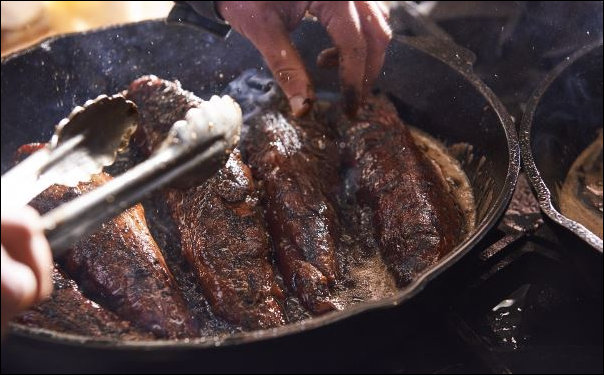by James A. Bacon
As Baby Boomers hit retirement age with creaky joints and declining appetites for activities that involve running, leaping and moving at hurl-inducing velocities, they’re looking for something different in a vacation experience. As a rule, that means less adventure and more fine dining. My wife and I are exemplars of this trend, having just returned from three days of strolling through the historic district of Charleston, browsing art galleries and enjoying the city’s low country cuisine.
If you want to develop a tourism industry, you’d darn well better develop a first-class culinary experience to go along with it.
For a long time, that was a problem for much of Appalachia, which yearns for a source of economic activity to replace the decline of coal mining, tobacco cultivation and light manufacturing. There was only so much Appalachian communities could do to attract big-budget Boomers with hiking, kayaking and country music festivals when the most chi-chi restaurants in town were Olive Garden and Red Lobster.
But there may be hope. Foodies on the lookout for the next big thing in the culinary universe may find it in the valleys and hollows of central Appalachia, where a new generation of cooks is drawing upon the unique flavors of the mountain cooking tradition — from greasy beans, huckleberries and goosefoot to sour corn, kilt lettuce and apple butter.
According to Jane Black, writing in the Washington Post, “Southern and central Appalachia are acknowledged as the most biodiverse regions in North America.” Researchers have documented 1,412 distinctly named heirloom foods in the region, including more than 350 varieties of apples, 464 varieties of peas, and 31 kinds of corn. That’s a lot of different flavors.
Black profiles Travis Milton, who was born in Castlewood, Va., moved to Richmond and took a job at Comfort, a restaurant that showcases Southern cooking. The owner gave him the freedom to experiment. Writes Black: “He made Kentucky frogs’ legs and chicken wings glazed with Mountain Dew barbecue sauce. He also started making vinegars from all manner of things: turnip greens, honeydew melon, even Cheerwine, a North Carolina soda pop, which he in turn used to make cheeky vinegar pie.” Later this year, he will open Shovel and Pick, an Appalachian-themed restaurant, in Bristol, Tenn.
Last fall, scholars, chefs and activists hosted an Appalachian food summit in Abingdon, Va., to examine how the region’s food heritage can boost local economies. Milton, one of the chefs featured at the event, hopes to legitimize Appalachian food as a way to stimulate interest in artisinal Appalachian food products such as heirloom apples, cider and “Virginia-style” whiskey.
By itself, Appalachian cuisine can’t rescue the Appalachian economy. Consider it a necessary ingredient for developing viable tourism and artisinal-agricultural industries, which can help support the region. Baby Boomer travelers hunger for authentic cultural experiences in their travels. Combine the food with music, arts, crafts, hiking and biking trails, and beautiful landscapes, and you’ve got an economy that can support tens of thousands of people. Asheville, N.C., and Abingdon, Va., show how vibrant communities can thrive in the otherwise economically forlorn region.
Top-down economic development as propagated by the Virginia Tobacco Indemnification and Revitalization Commission hasn’t done much to help Virginia’s Appalachian counties other than prop up manufacturing industries that are likely to leave as soon as the subsidies cease. Bottom-up economic development, which builds upon the unique traditions and proclivities of the people, is far more likely to succeed.




